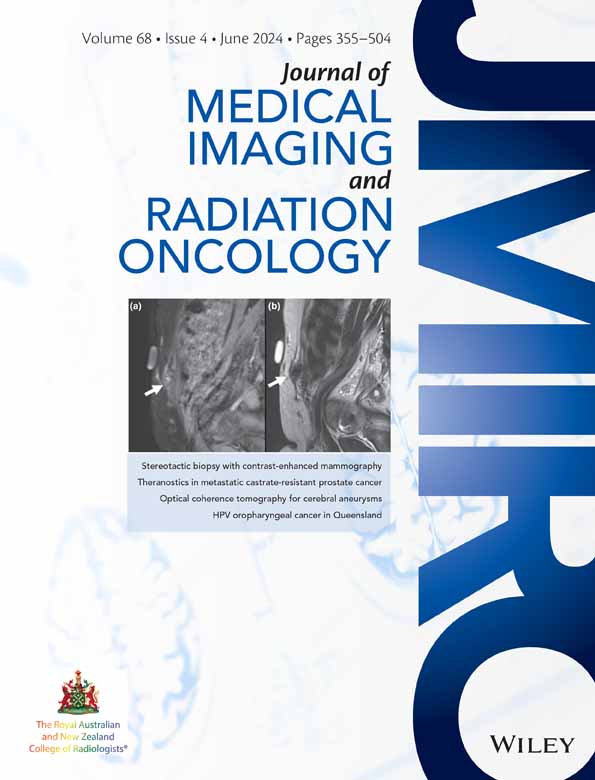Deep learning denoising reconstruction enables faster T2-weighted FLAIR sequence acquisition with satisfactory image quality
ME Brain: BVSc (Hons), MBBS (Hons); S Amukotuwa MBBS, PhD, FRANZCR; R Bammer MBA, PhD.
Abstract
Introduction
Deep learning reconstruction (DLR) technologies are the latest methods attempting to solve the enduring problem of reducing MRI acquisition times without compromising image quality. The clinical utility of this reconstruction technique is yet to be fully established. This study aims to assess whether a commercially available DLR technique applied to 2D T2-weighted FLAIR brain images allows a reduction in scan time, without compromising image quality and thus diagnostic accuracy.
Methods
47 participants (24 male, mean age 55.9 ± 18.7 SD years, range 20–89 years) underwent routine, clinically indicated brain MRI studies in March 2022, that included a standard-of-care (SOC) T2-weighted FLAIR sequence, and an accelerated acquisition that was reconstructed using the DLR denoising product. Overall image quality, lesion conspicuity, signal-to-noise ratio (SNR), contrast-to-noise ratio (CNR), and artefacts for each sequence, and preferred sequence on direct comparison, were subjectively assessed by two readers.
Results
There was a strong preference for SOC FLAIR sequence for overall image quality (P = 0.01) and head-to-head comparison (P < 0.001). No difference was observed for lesion conspicuity (P = 0.49), perceived SNR (P = 1.0), and perceived CNR (P = 0.84). There was no difference in motion (P = 0.57) nor Gibbs ringing (P = 0.86) artefacts. Phase ghosting (P = 0.038) and pseudolesions were significantly more frequent (P < 0.001) on DLR images.
Conclusion
DLR algorithm allowed faster FLAIR acquisition times with comparable image quality and lesion conspicuity. However, an increased incidence and severity of phase ghosting artefact and presence of pseudolesions using this technique may result in a reduction in reading speed, efficiency, and diagnostic confidence.
Conflict of interest
Nil.
Open Research
Data availability statement
Data generated or analysed during the study are available from the corresponding author by request.




